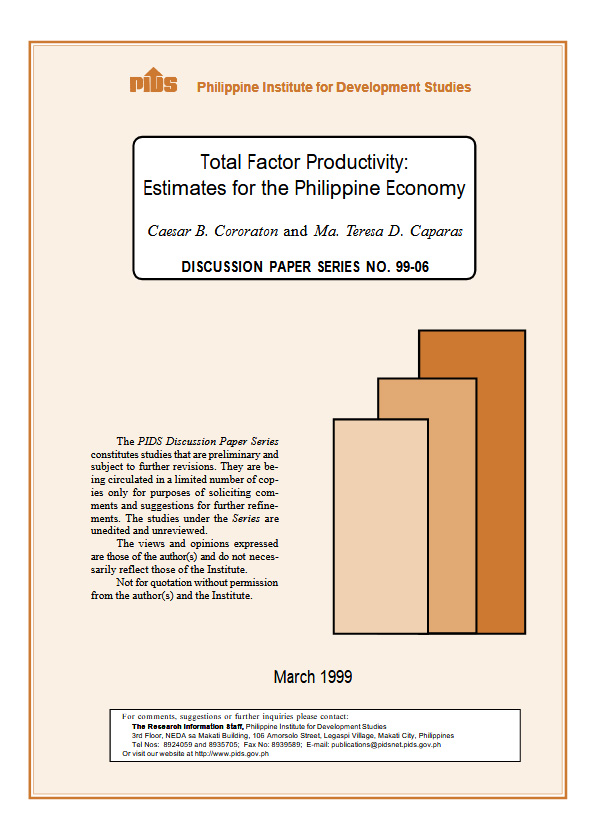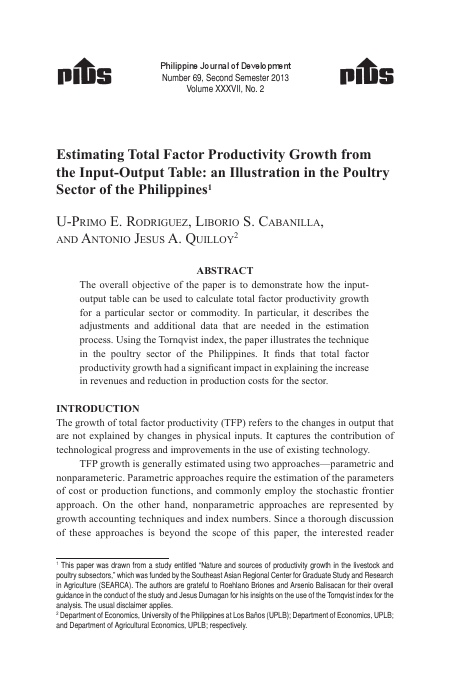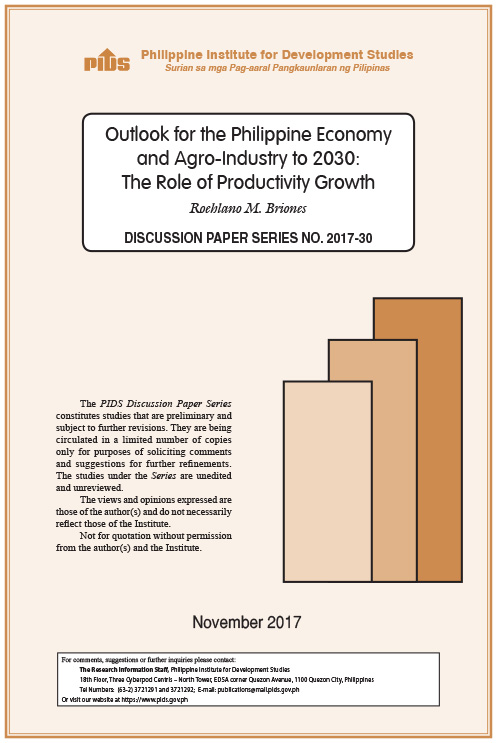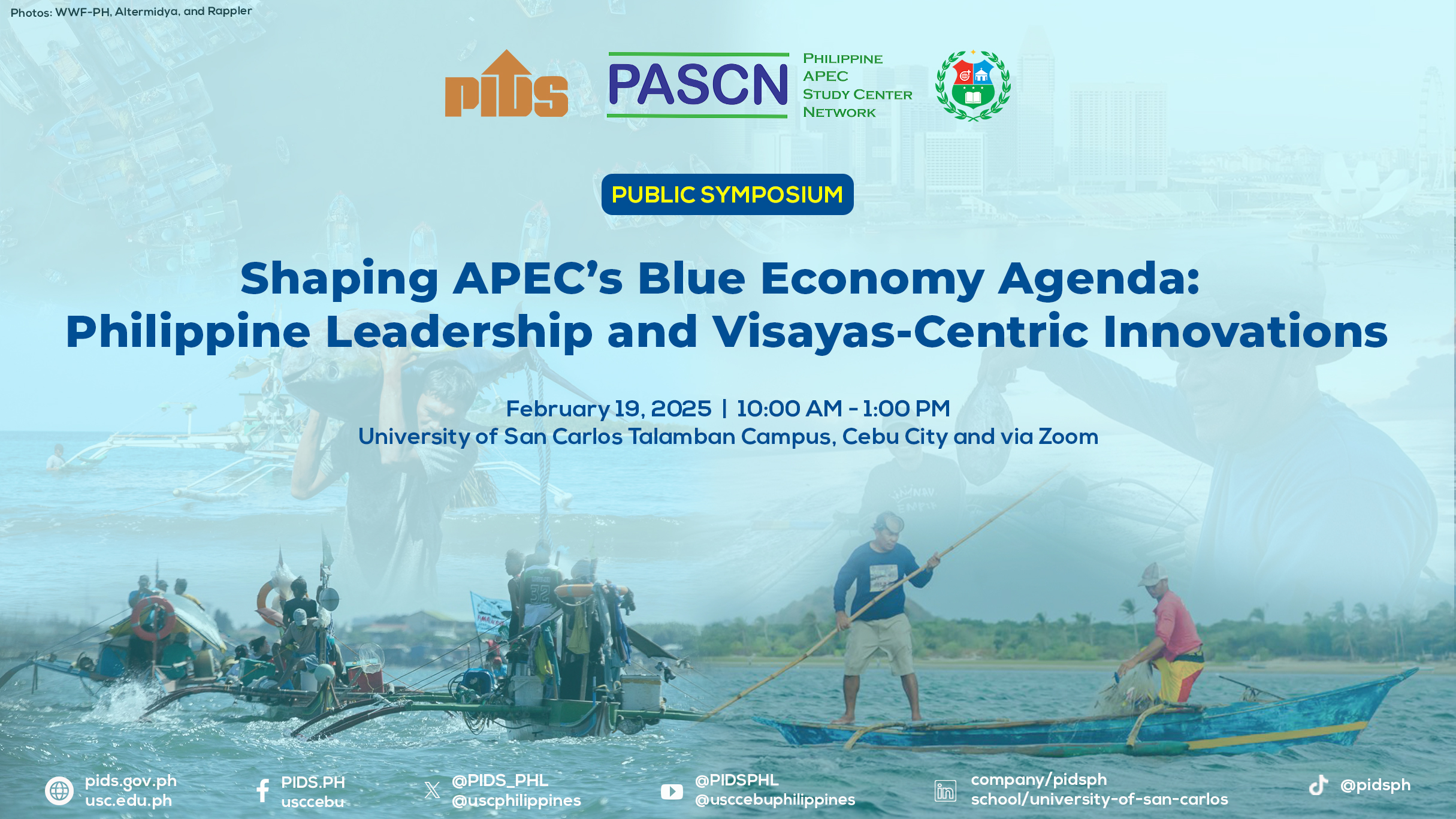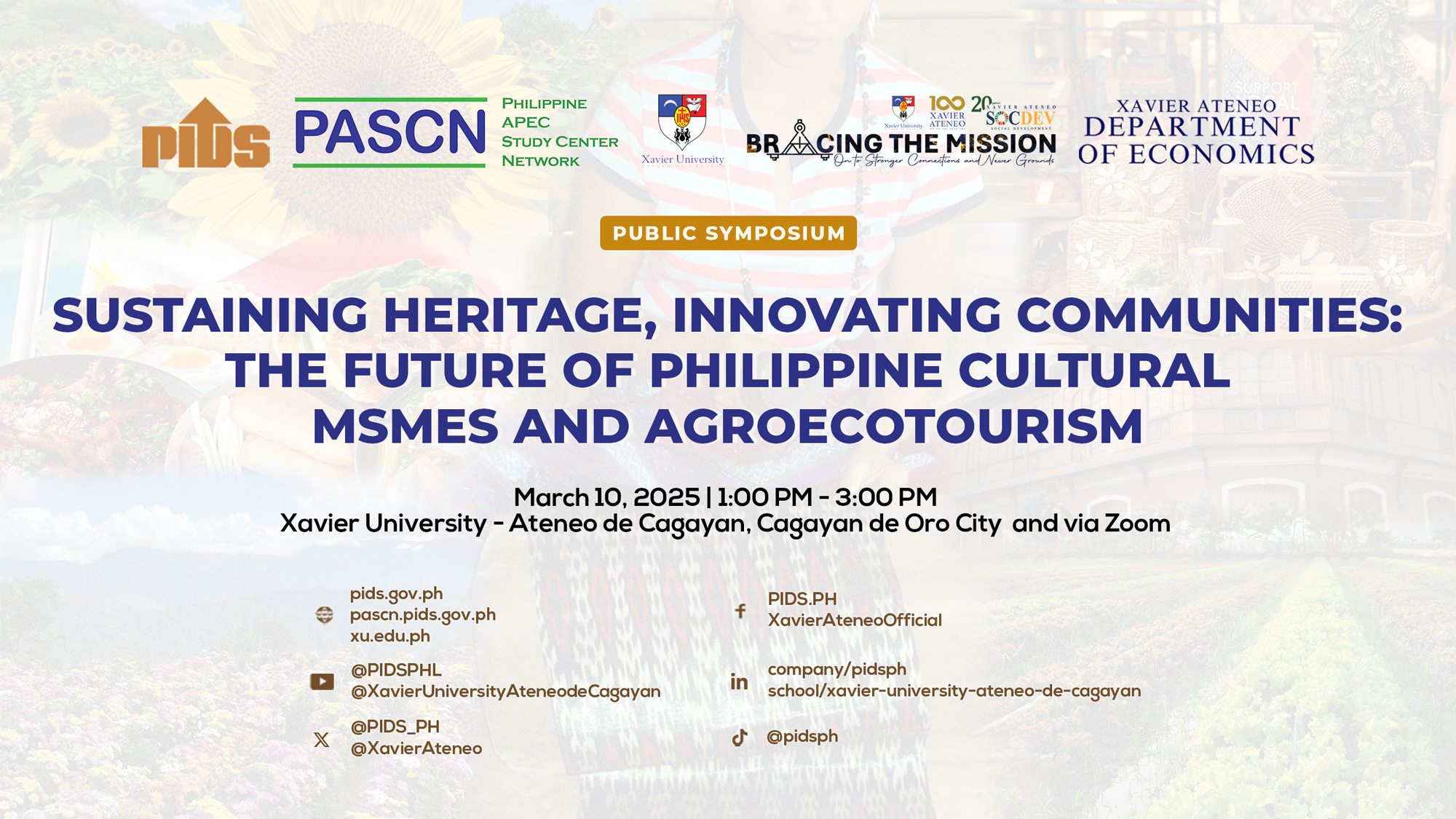This paper develops and constructs a database for TFP estimation at the aggregate level and at the nine major sectors. A comparison of TFP estimates for different countries is conducted. In addition, a methodology is developed for TFP computation, which is afterwards applied to existing Philippine data to facilitate new TFP estimates. Four methodologies are used to compute: traditional growth accounting, Divisia-translog, Econometric and Stochastic Frontier Approach. Results indicate that TFP improvement right after the 1980 crisis is not sustainable. Data on early 1990s show TFP being below zero. Focusing within the period, evidences of TFP differential across sectors are traced.
Citations
This publication has been cited 5 times
- Briones, Roehlano M.. 2010. Scenarios and options for productivity growth in Philippine agriculture: An application of the Agricultural Multimarket Model for Policy Evaluation (ample). Discussion Papers DP 2010-05. Philippine Institute for Development Studies.
- Briones, Roehlano M.. 2012. Addressing land degradation: Benefits, costs, and policy directions. Philippine Journal of Development PJD, 37, no. 1c . Philippine Institute for Development Studies.
- Cororaton, Caesar B.. 2002. Total factor productivity in the Philippines. Discussion Papers DP 2002-01. Philippine Institute for Development Studies.
- Cororaton, Caesar B. and Janet S. Cuenca. 2001. Estimates of total factor productivity in the Philippines. Discussion Papers DP 2001-02. Philippine Institute for Development Studies.
- EABER. 2010. Scenarios and options for productivity growth in Philippine agriculture: An application of the Agricultural Multimarket Model for Policy Evaluation (ample). Microeconomics Working Papers 22806. East Asian Bureau of Economic Research.

